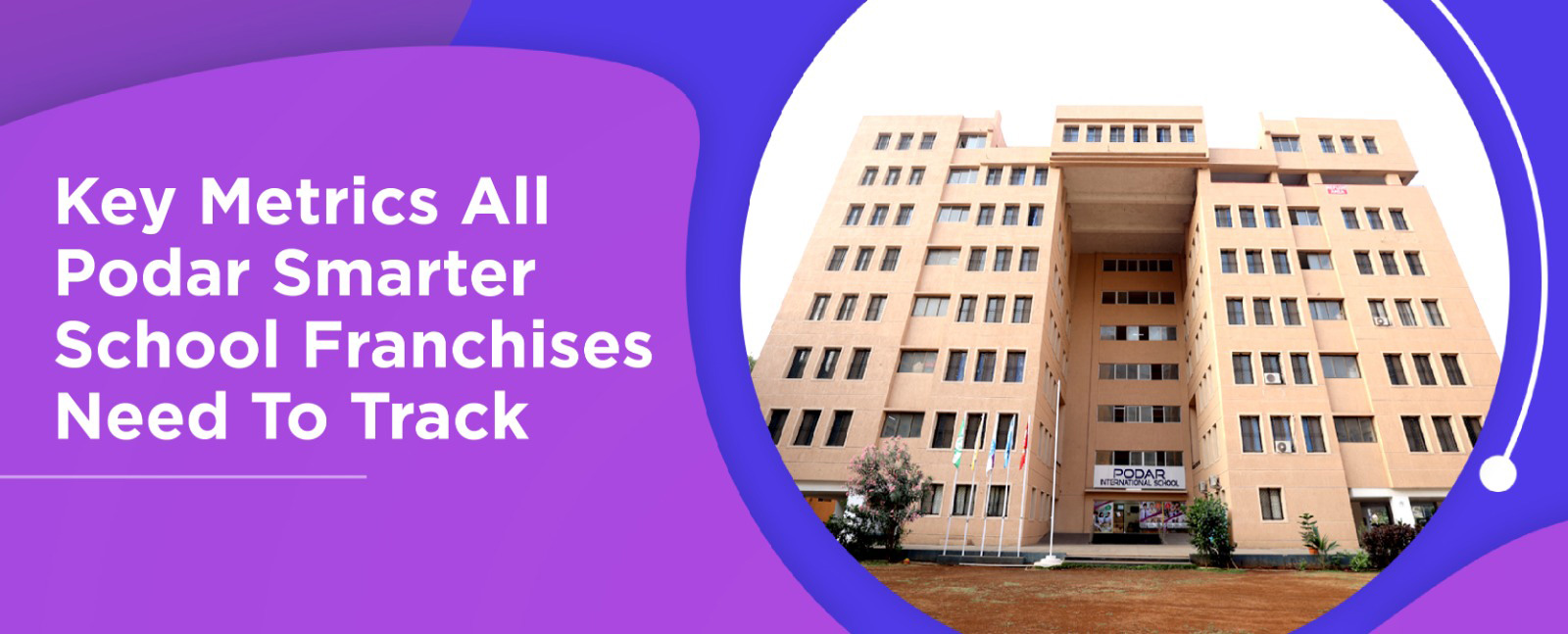Running a Podar Smarter School franchise is equal parts pedagogy and performance management. Whereas the Podar brand offers battle-tested curricula and national recognition, daily success is based on how tightly you track what matters. Here’s what you’ll be learning about: four must-watch metrics—student-teacher ratio, enrollment growth, parent satisfaction, and academic performance—and quick tips on how to take it in, digest it, and act on each one. Collectively, they build the data dashboard that maintains admissions strong, classrooms active, and stakeholders contented.
Enquiry Form
1. Student-Teacher Ratio (STR): The Learning Climate Barometer
Why it matters: An ideal STR (typically 20:1 or lower for primary subjects) allows the teacher to individualize learning and monitor the progress of each and every child—cornerstones of Podar pedagogy.
How to monitor: Your campus ERP is already monitoring class strength and staff data; auto-generate a weekly STR report by subject and grade.
Action triggers:
- Over target? Use pod-sharing (teaching two large groups double) as a short-term solution until HR employs qualified staff.
- Below target but fixed enrolment? Reassign teachers to enrichment modules such as coding or robotics to maximize use of resources.
2. Rate of Growth in Enrollment: Pulse of Market Demand
Why it is important: Healthy, sustained consumption (5–8 % YoY in established suburbs; 12 %+ in new suburbs) shows brand momentum and propels economies of scale.
How to track: Graph month-on-month enquiry-to-admission numbers against this time last year and by grade to reveal early-years vs. mid-school traction.
Action triggers:
- Decline in Grade 1 enquiries? Bolster preschool marketing and cross-sell with day-care centres.
- Mid-year high transfers? Look for likely cause—fee policy, peer competition, or transport travel—and respond before annual admissions cycle.
3. Parent Satisfaction Score (PSS): Your Word-of-Mouth Engine
Why it matters: Word of mouth over the coffee-morning grapevine is a stronger medium than advertising for Indian education. An 85 %+ PSS equates directly to referral intake and goodwill in the community.
How to measure: Short, phone-friendly questionnaire at term’s end with three viewpoints—academic guidance, safety & facilities, and open communication. Use a five-point Likert scale and one open question (“Tell us one thing we could do better”).
Action triggers:
- Low communications score? Begin weekly online diaries and teacher office hours.
- Good feedback on buses or canteen? Deal with “hygiene factors” swiftly; they are worth as much as marks.
4. Academic Performance Index (API): Pedagogical Impact Evidence
Why it matters: Benchmark tests and board-exam pass rates are still the favorite subject of industrious parents. In Podar, an API includes termly results, Olympiad achievement, and value-added progress (growth from baseline to end-of-year).
How to monitor: Utilize Podar’s analytics module: load marks for analysis each term and allow the system to deduce subject-wise growth curves. Mark at-risk students (<60 % avg or negative trend) for remedial classes.
Action triggers:
- Math growth plateau? Initiate peer-tutoring clusters and adaptive learning apps.
- Star performers?’ Steer them towards inter-school competitions to seal the campus success story.
Turning Numbers into Narrative
Numbers without narratives are meaningless. Picture STR, growth, PSS, and API on a single slide, colour-coded red-amber-green, at each monthly leadership meeting. Derive insights to share with staff and even parents; transparency promotes collective responsibility. Lastly, match each metric with an OKR (Objective & Key Result)—e.g., “Boost PSS from 82 % to 88 % by Q4 by maintaining constant parent-teacher communication.”
Leaning into these four measures on a constant basis will keep your Podar Smarter School franchise ahead of the pack, so that every single strategic choice—recruiting to infrastructure upgrades—is guided by rock-solid, student-centric data.

